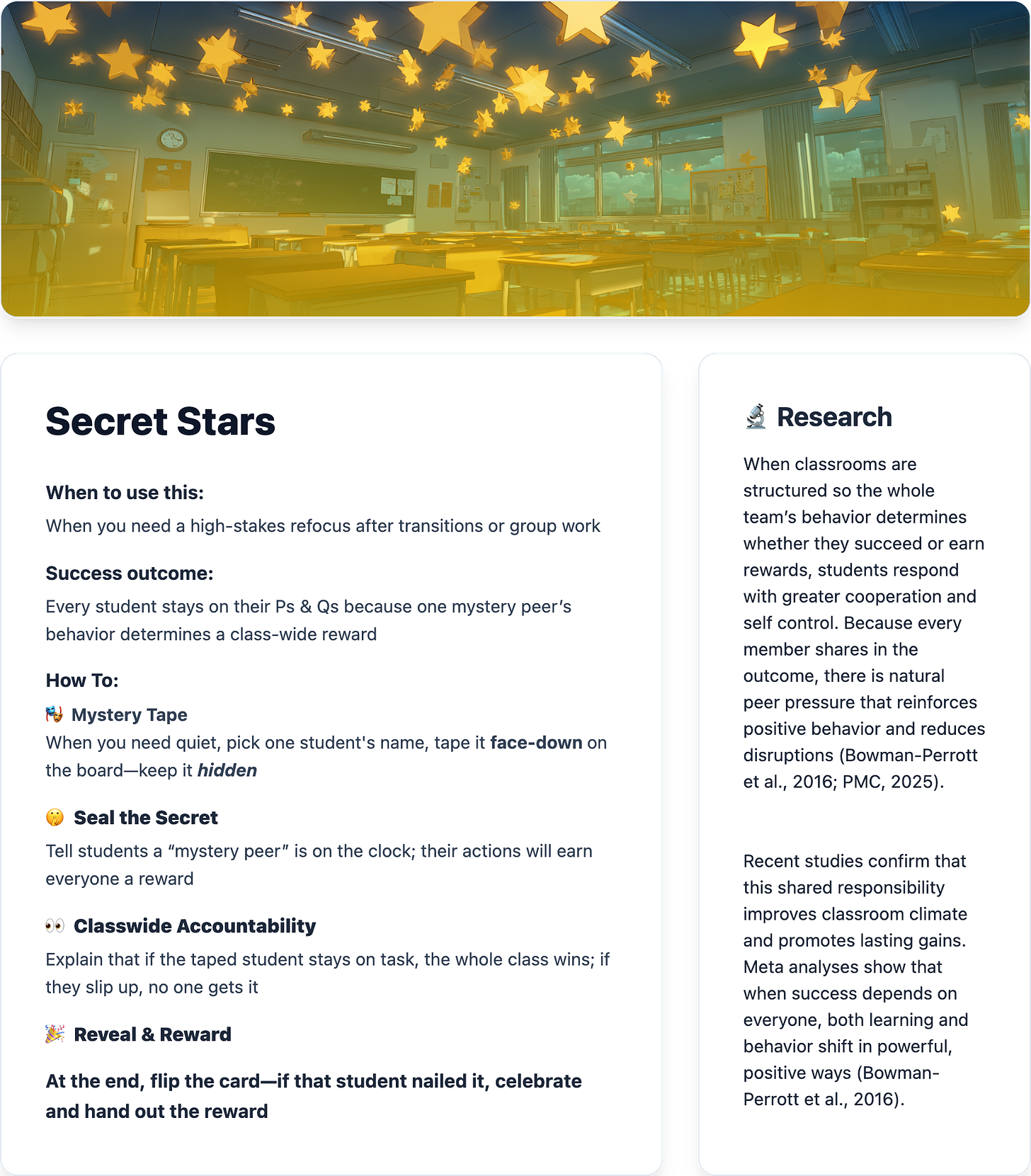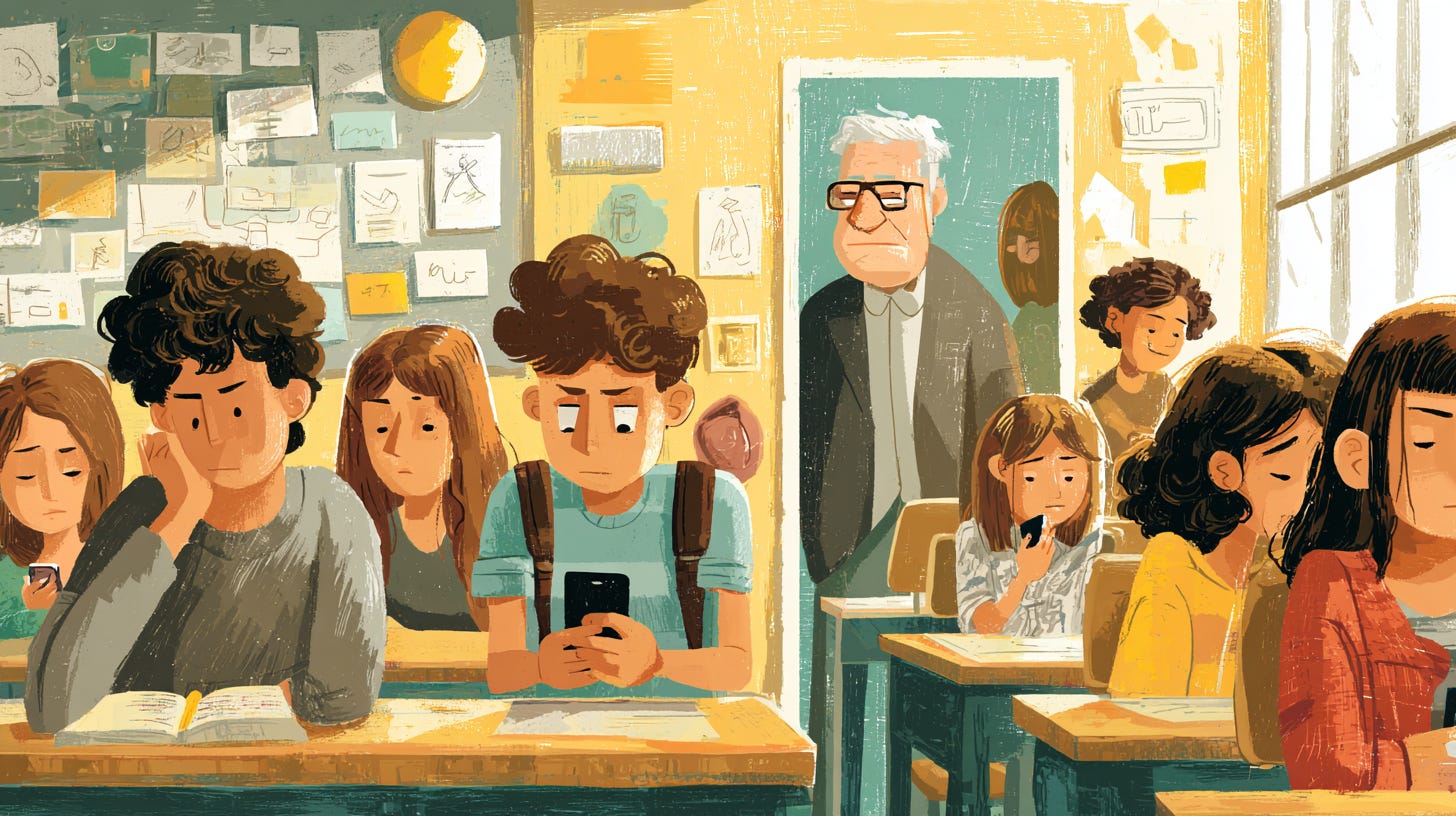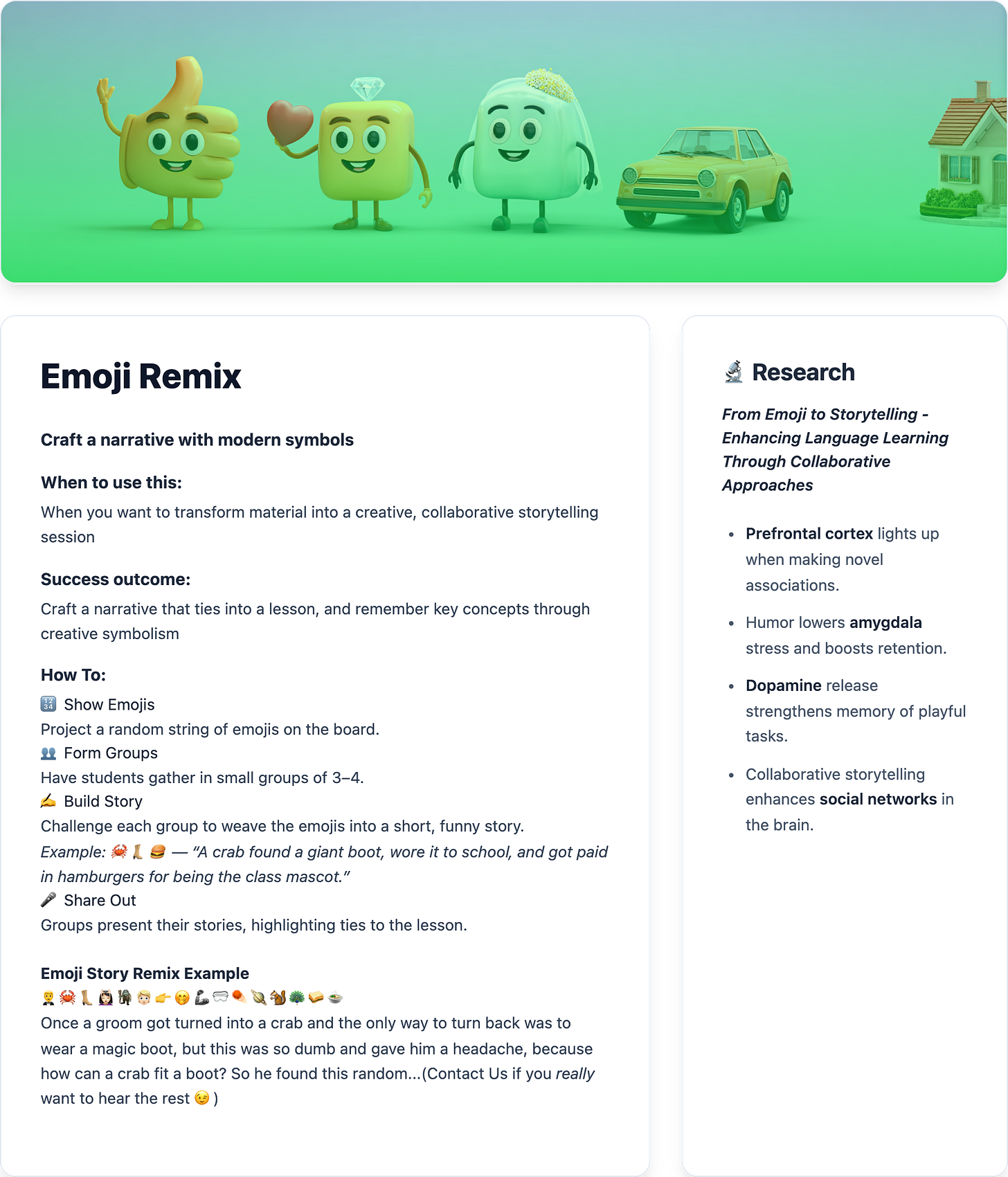How to Handle Persistent Behavior Challenges Without Blowing Up
When Patience Run Thin: Brain-based Moves That Shift Mindsets, Behaviors, and Learning Opportunities
classwork.
Every teacher has been there: the post-lunch slump, the end-of-day lethargy, or the constant calls for help when the directions were just explained. These moments test your patience and can leave you feeling frustrated and overwhelmed.
The key to managing these moments is to understand the powerful link between how you frame a problem and the emotions that follow. By pausing to take a breath, naming your emotion, and thinking about your desired outcome, you activate your prefrontal cortex. That gives you the space to respond thoughtfully instead of reacting impulsively.
Let’s explore two common scenarios and discover how altering your thinking can alter the outcome for the entire class.
The October Afternoon Slump 😴
It’s 1:30 p.m. on a Tuesday. The post-lunch slump is real. As students stream in, some are animated and talking while others look like zombies with no materials. Instead of settling into their Before-the-Bell work, the talkers are still talking and the zombies have their heads down.
Your Brain’s Gut Reaction:
Of course, it’s always the same problem and the same kids day in and day out. They should not have to be constantly reminded.The Brain on Alert:
The amygdala fires, stress hormones surge, and your prefrontal cortex, the part of the brain responsible for logical, thoughtful action, starts to lose its influence. You feel a wave of exasperation.🪜🧠 Brain Aligned Reset: Name It, Reframe It, Redirect It
😡 Name it: Pause to acknowledge the emotion you’re feeling. Say to yourself, “I feel exasperated and need to take a breath.” This simple acknowledgment may seem small, but it instantly shifts your brain activity by activating your prefrontal cortex and calming the amygdala.
🖼️ Reframe it: Shift the story from what students are doing wrong to what is going right. Instead of thinking, “Every day, it’s the same kids, this is so aggravating,” try replacing it with, “Every day I have so many students who come in and get started.” This reframing gives your brain a quick hit of dopamine, which uplifts your spirits and alters where you want to place your attention.
🧭 Redirect it: Channel that energy into the behaviors you want to grow.
Make it personal and specific: “Thomas, thank you for getting started right away. That shows focus.” This kind of praise shapes behavior and communicates what you value. For more on how targeted praise shapes behavior, see The Carrot and the Stick.
Use a classwide strategy:
Secret Stars, where students work together to earn hidden recognition. A full walkthrough of this strategy appears later in the article.
Catch and Release, a brief reflective pause that helps students reset and refocus (Link to free strategy app for details)
This simple reframing will change a challenging moment and help you build a culture where students can thrive.
The Mini Lesson Meltdown 📖

Every classroom moment can be seen from a different perspective. Reframing your classroom challenges reshapes behavior and learning outcomes. It’s midway through class. You’ve just wrapped a mini lesson and given directions for independent work. Instead of diving in, a few students in the back start horseplaying. Another student puts up a hoodie and lays their head down. One more begins calling out: “What page? Does anyone have a pencil? Can I borrow a book?”
Your Brain’s Gut Reaction:
I just explained this! Should I tell them again? They are being so disrespectful, they should know to pay attention for 15 minutes. Did they hear anything I said??The Brain on Alert:
Your amygdala flags stress and pumps out stress hormones. The prefrontal cortex wants to think of a positive response, but frustration mounts as your hippocampus spits out reminders of all the times this has happened before.🪜🧠 Brain Aligned Reset: Name It, Reframe It, Redirect It
🤯 Name it: Acknowledge your growing frustration, even if it feels justified.
🖼️ Reframe it: Shift your thinking. “I may have every right to be frustrated, but that does not give me the right to be vindictive.” This empathetic step helps you see how retaliation would affect your students.
🧭 Redirect it: Ask yourself, “What do they need that I am not providing?” Then use a quick reset strategy to meet that need and re-engage the class.
A Web of Understanding: Students recall and review the lesson by sharing insights while creating a physical web.
Emoji Remix: Students reinforce learning, deepen understanding, and make new connections through an emoji-based remix.
The Model Behind the Moves
Veteran teachers know the pendulum will swing from one reform or fad to the next. New programs, best practices, and frameworks come and go. Technology shifts. Politics change. Student needs keep evolving. Through it all, one truth remains: the brain is the foundation of learning and behavior, and that will never change.
That’s why we built the BrainZones Model. Unlike many frameworks born in research labs or conference rooms, BrainZones was shaped by more than 25 years of real classroom practice and three decades of collaboration and refinement.
At its core, the BrainZones Model brings neuroscience into everyday teaching. Grounded in decades of research on brain networks, learning, emotions, and behavior, it gives educators a simple way to recognize students’ brain states and connect those states to how learning takes place and how emotions shape behavior.
Strategy Cards
Secret Stars:

Students respond with greater cooperation and self-control when every member shares responsibility in the outcome Adapt Emoji Remix: When students first come in have them summarize yesterdays lesson with emoji remix. Have some students share before jumping into your lesson.
The Final Takeaway
You have a choice in every difficult moment. Instead of trying to force focus from a tired or restless brain, you can pave the way for focus. The best strategy is not about controlling behavior but about understanding the brain and designing a learning experience that works with it.
👋🏼 Thanks for reading,
Debbie@brainzones.org





